2020 官网升级中!现在您访问官网的浏览器设备分辨率宽度低于1280px请使用高分辨率宽度访问。
As a tool for rock drilling, rock drilling tools are familiar to professionals who work in the field of infrastructure construction, road construction, mining, etc. But it is difficult for newbies in the industry. Because there are so many types of rock drilling tools, the methods of use are also different. So we summarize the related knowledge of rock drilling tools for everyone based on our extensive experience. If you want to know more about “what are rock drilling tools”, you can click to view it directly. Today, I will share with you the types of rock drilling tools.
From the article “What are rock drilling tools“, we can learn about the six types of rock drilling tools. The rock drilling tool is a general term for rock drilling bits, drill rods, coupling sleeves, shank adapters, etc., and these are all types of rock drilling tools, but they are refined into different types. Next, we will introduce it to you in detail according to this dimension.
1. Rock drill bit
It mainly can be divided into taper bit, thread bit, and DTH bit.
A. Taper bit: It can be divided into chisel bit, cross bit, and tapered button bit.
a. Chisel bit: It has a relatively simple manufacturing process, convenient regrinding, reliable work, and strong adaptability to rock mass performance. It is often used with light internal combustion, electric, pneumatic, and hydraulic rock drills to drill rock holes with a diameter of less than 50mm in various types of rock.
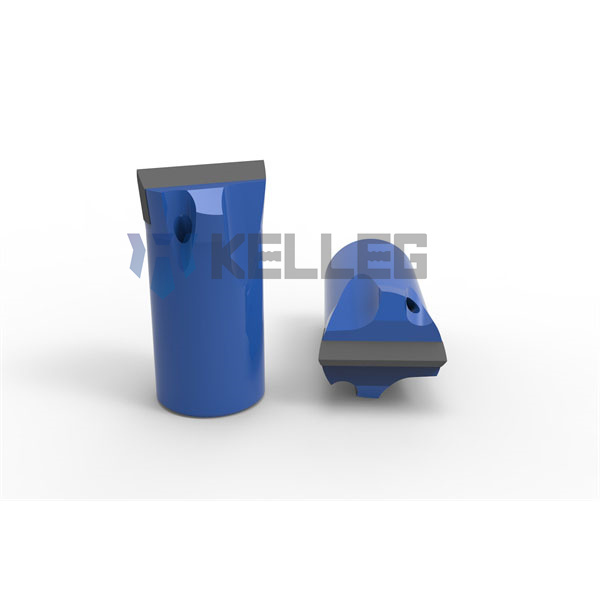
b. Cross bit: It is the main variety in the international chip series drill bit. The diameter of the drill bit is in the range of 29-48mm, and it has strong adaptability to rock drilling conditions and is almost not limited by the rock drilling type and rock mass.
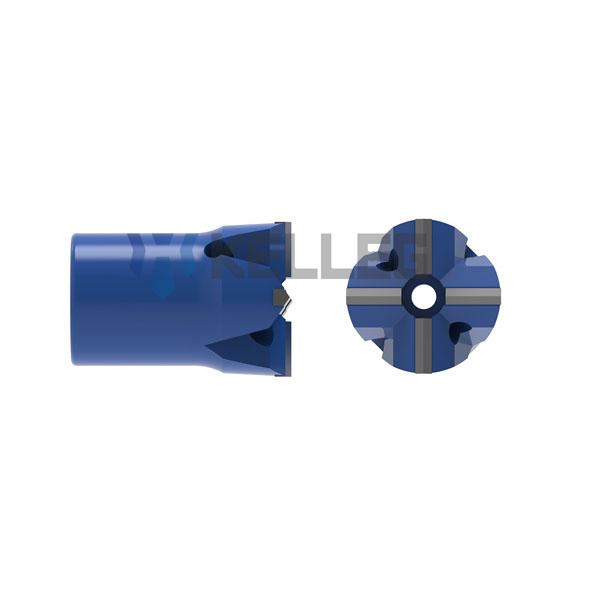
c.Tapered button bit: It is a kind of drill bit used in combination with the pneumatic rock drill and the tapered rod. After connecting with the drill rod, the drilling operation is carried out.
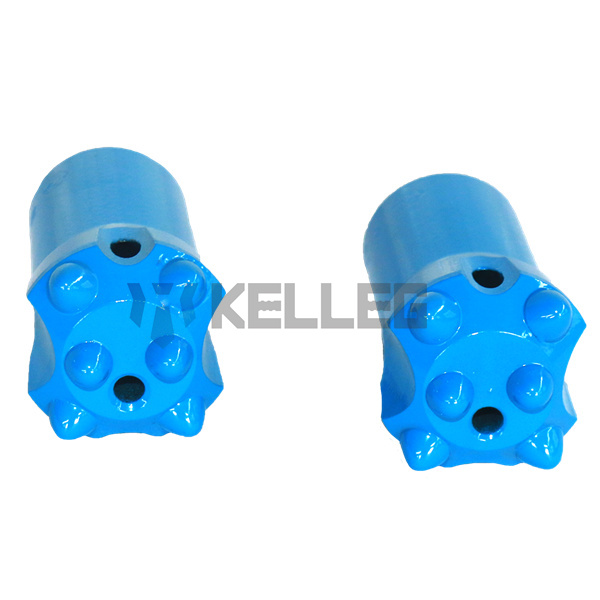
B. Threaded bit: Because of its reliable connection, It can transmit large torque, and it is convenient to extend the drill rod, so it is mostly used on drill stands or drilling rigs to drill large and deep rock holes. The specifications commonly used in various countries are R22, R25, R28, R32, R38, T38, T45, and T51.
C. DTH bit: The commonly used diameter of the DTH drill bit is 65~130mm, DTH rock drilling rig is used in medium and large aperture open-pit rock drilling projects. The down-the-hole drill bit has stable rock drilling performance and is easy to use and grind.
2. Drill rod
It mainly can be divided into integral drill rod, quarry drill rod, tapered drill rod, and threaded extension rod.
A. Integral drill rod: A drilling tool made by integrating the drill bit, drill rod, and drill tail. Features: It eliminates the energy loss at the connection of the tapered rock drilling tools and the phenomenon of drill bit loss, which improves work efficiency; each integral drill has a specific length and drill diameter. When the hole depth exceeds its length, it needs to be replaced by a longer drill rod; when the head alloy sheet is normal retirement, it can be cut and used as a conical drill.
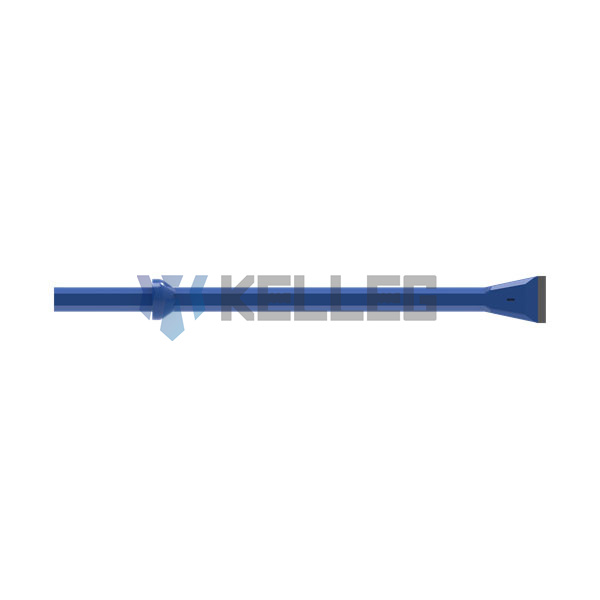
B. Quarrying drill rod: This kind of drill rod is the main application in small hole operations in the quarrying industry. The diameter of the drill bit of the quarrying drill rod may be smaller than the diameter of the rod.
C. Tapered drill rod: Such drill rod is connected with the rock drill using a forged drill shoulder and shank adapter. The tapered drill rod is the most widely used of all types of drill rods. Hollow hexagonal drill rods belong to the category of small cross-section drill rods. 19mm, 22mm, 25mm, and 28mm are more commonly used internationally.
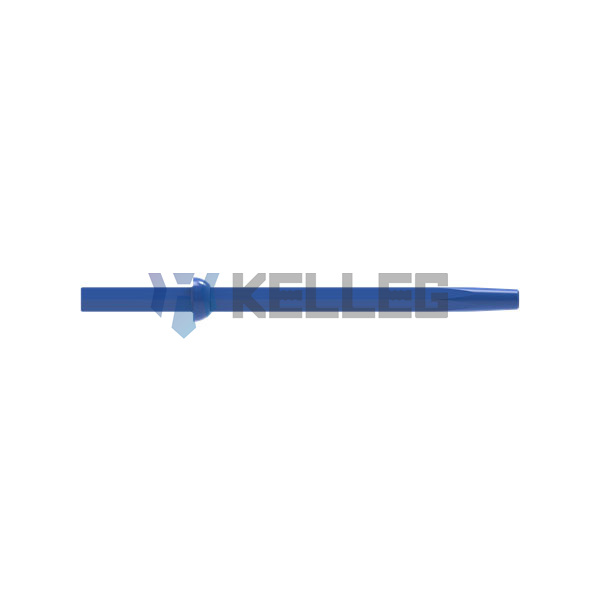
D. Threaded extension rod: It is a hollow circular or hollow hexagonal drill rod with threads at both ends or one end of the rod. It is the main component of the threaded extension drill tools. One end of the extension drill rod is connected with the shank and the rock drill through the coupling sleeve and the other end is directly connected with the drill bit. The threaded extension drill rod can be connected with a shank adapter and drill bit in single or multiple pieces. It has a wide range of applications. High speed, less loss of impact energy transfer, high rock drilling efficiency, easy to realize mechanized drilling, improved drilling conditions, and other advantages. Therefore, the proportion of threaded extension rods in rock drilling tools has been rising. That is to say, it has the largest variety, the most complete specifications, the largest quantity, and the best economic benefits among all the drilling tools. Threaded extension rods are divided into shank rods, extension rods, trolley drill rods, and speed rods.
a. Shank rod: It is a threaded connection drill rod with a nominal diameter of the thread larger than the hollow steel rod. During processing, the end must be forged and upset before thread processing. During drilling, the reduction in the weight of the drill rod is beneficial to the improvement of drilling efficiency.
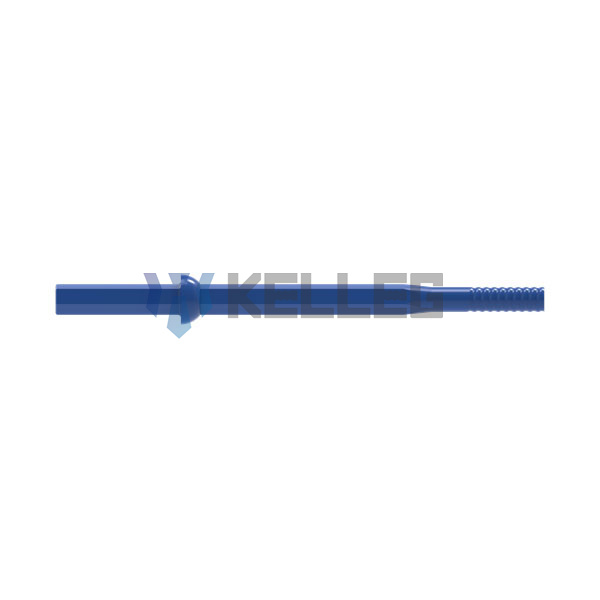
b. Extension rod: Threaded drill rod with a threaded connection at both ends, nominal diameter of the thread is equal to the nominal diameter of the hollow steel rod body or the distance between the opposite sides.
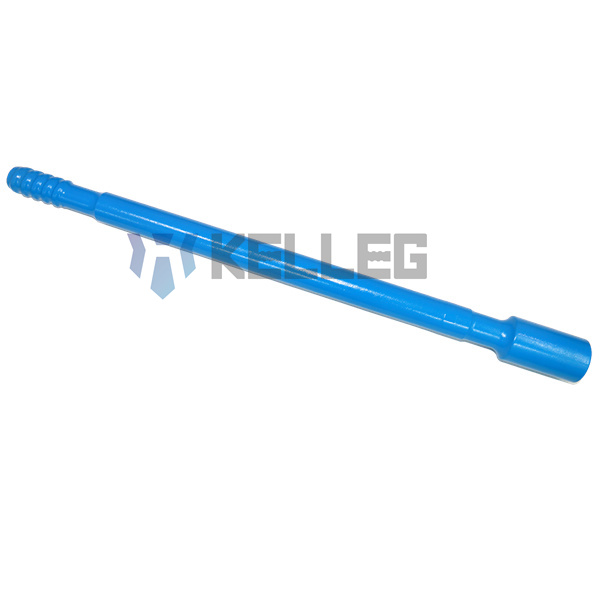
c. Trolley drill rod: It is a threaded extension drill rod with one end of the nominal diameter of the thread larger than or equal to hollow steel and the other end equal to or smaller than hollow steel. Its main structural feature is that the nominal diameters of the two threads are inconsistent. When drilling, the larger end is connected with the shank, and the other end is connected with the drill bit.
d. Speed rod: This is a round or hexagonal threaded extension drill rod with an internal thread at one end and an external thread at the other end. This threaded extension drill rod is known as the MF drill rod abroad. Because the Speed rod integrates the coupling sleeve and the drill rod, the weight of the matching drill tool is lower, it shortens the thread connection length, and the impact energy loss at threaded joints is reduced. The connection, change, loading, and unloading of the drill rod are more convenient. The drilling speed is accelerated, and the rock drilling efficiency is greatly improved.
3. Coupling sleeve
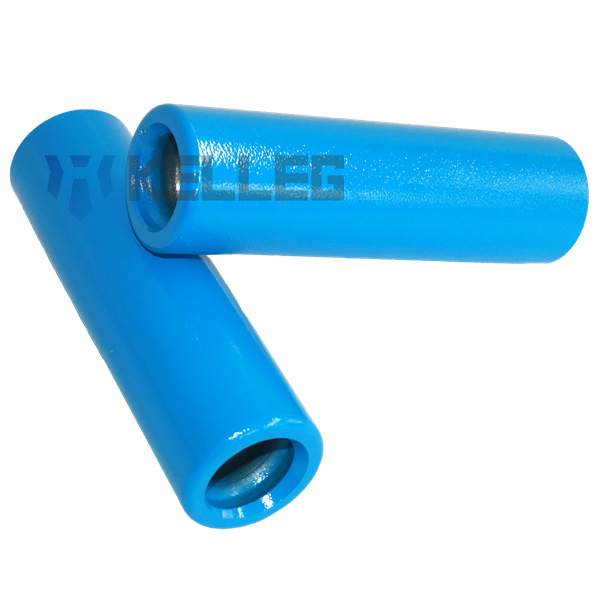
The coupling sleeve is an indispensable accessory in the drilling tools. It is applicable to connect drill rod to drill rod, and drill rod to shank with an internal thread. During the drilling process, the coupling sleeve is in the joint part of the matching rock drilling tools and is subject to the corrosion effects of stress such as axial tension and compression, bending and torsion, contact, and friction. Therefore, it is vital to rationally select the steel used for the coupling sleeve and optimize its geometric structure and manufacturing process. The coupling sleeve uses its thread to connect two or more drill rods or shank rods on the same axis, transmits the impact function of the rock drill, and achieves the purpose of drilling rock holes. It also acts as a stress wave propagation carrier like the drill rod.
4. Shank adapter
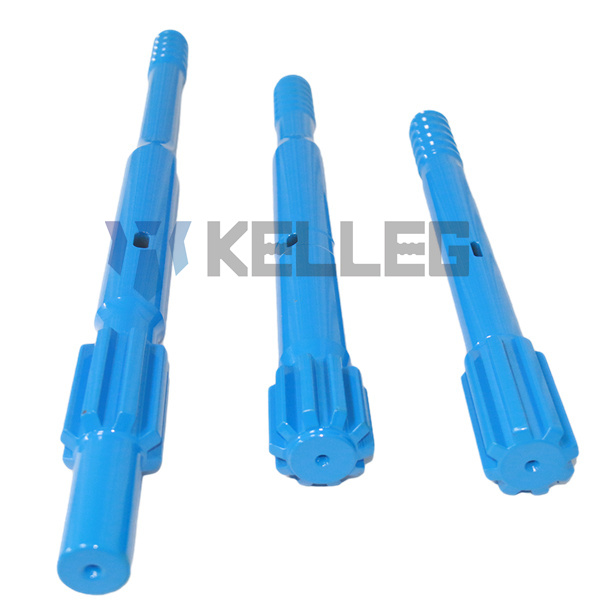
As a modern component for supporting rock drilling tools, the shank adapter is natal with the development of drilling technology and rock drilling conditions.
All above is today’s content. Moderate resource exploitation can expand larger living spaces, improve the living environment of human beings, and build more energy bases. Therefore, with the advancement of rock drilling technology and rock drilling machinery, the development of rock drilling tools increasingly accelerates. I believe that the types of rock drilling tools will be abundant according to the continuous changes in market demand. Let us wait and see.